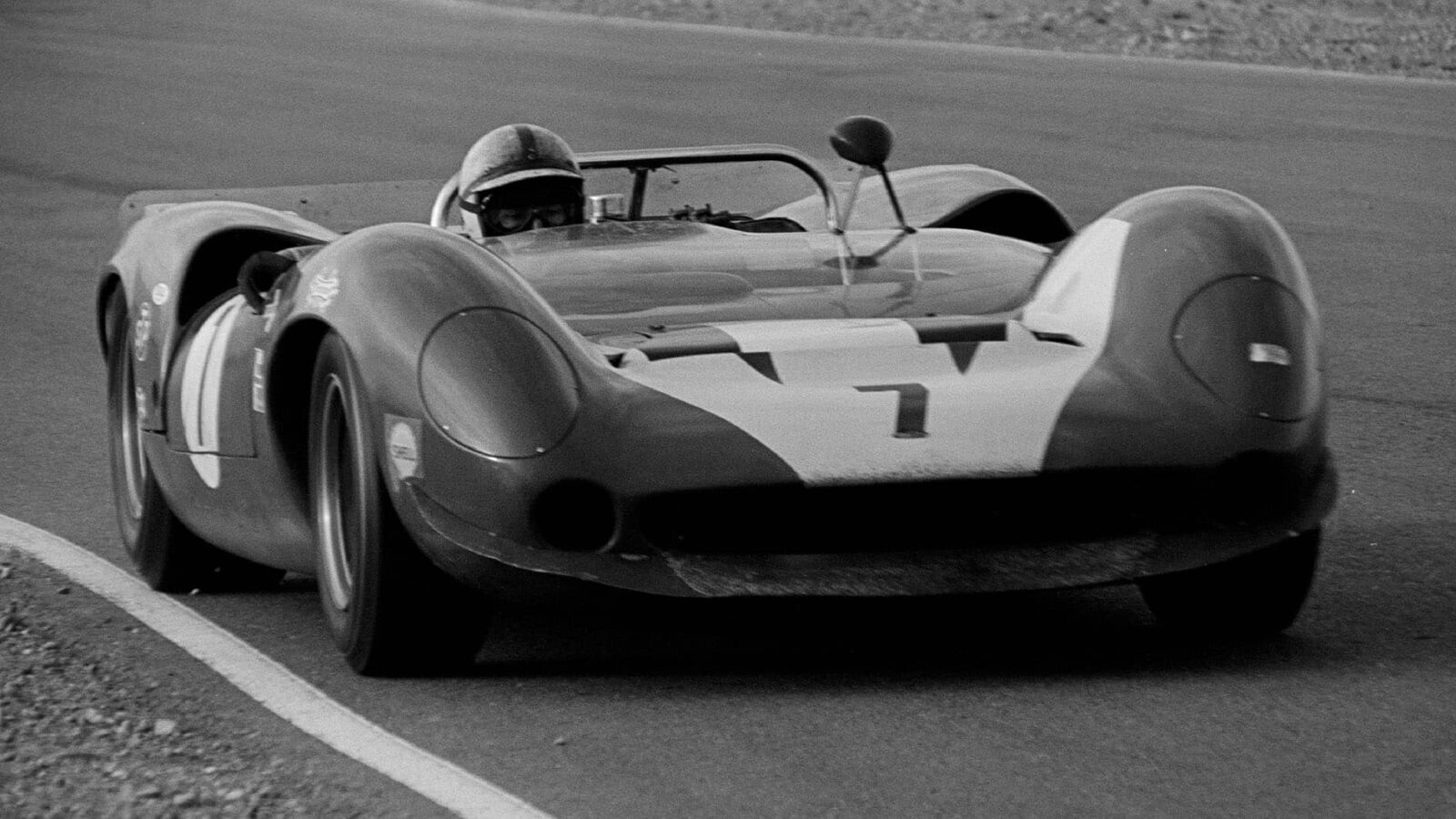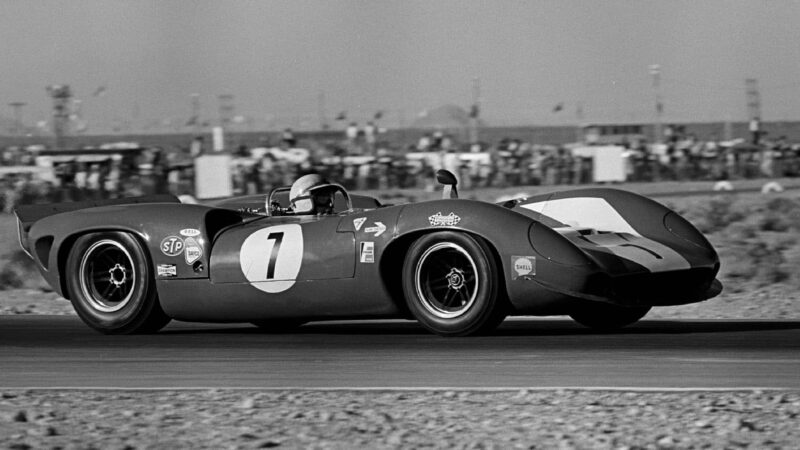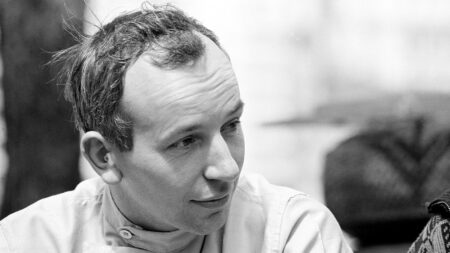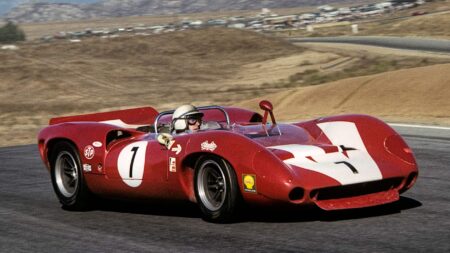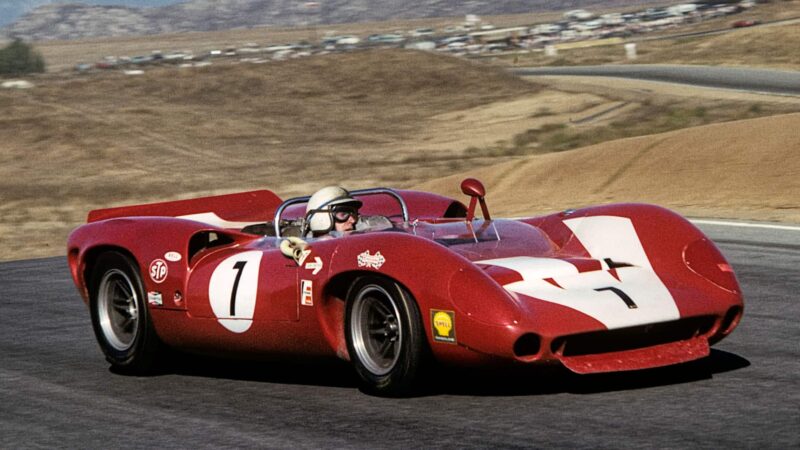Despite a major shunt in a T70 the year before, Surtees would prove the quality of Broadley’s design and his refinement of it by winning the inaugural Can-Am championship in 1966. Numerous other top drivers also piloted them in this period (Andretti, Bonnier, Donohue and Hulme to name but a few) before, in Surtees’ opinion, Can-Am was spoilt by big-money involvement from the likes of General Motors and Porsche.
Broadley and his team, which by then included Tony Southgate, turned the trick a second time in 1967 with the introduction of the T70 Mk3 coupé, the version shown overleaf. Aside from being devastatingly beautiful, it was aerodynamically daring in rejecting the usual fastback plus ‘Ferrari ridge’ spoiler for a flat rear deck with a slot down the middle to provide rear visibility and a relatively undisturbed air supply for the engine’s jutting ram pipes. Southgate put in many hours at the Imperial College wind tunnel and even consulted City University aerodynamicist AJ Scibor-Rylski to develop the design, the rightness of which was confirmed when Porsche adopted a similar high-back configuration to such devastating effect in the 917.
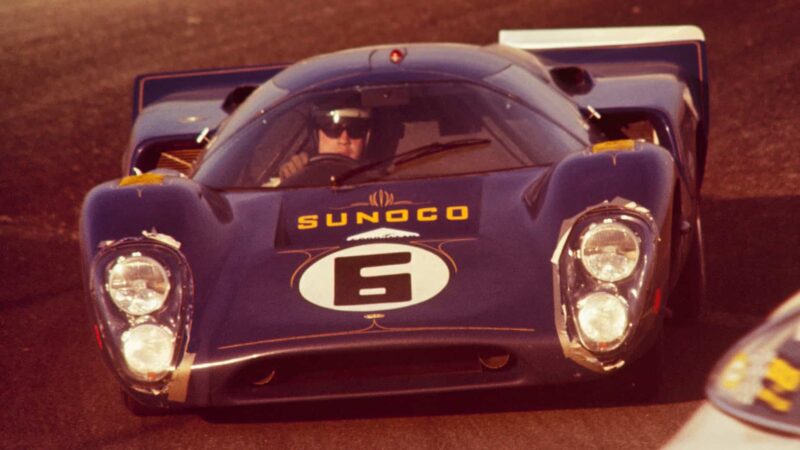
Lola T70 Mk3’s rear-end aerodynamics went on to inspire the dominant Porsche 917 – here Mark Donohue and Chuck Parsons take a Penske Mk3 to victory at the 1969 Daytona 24 Hours
Getty Images
There is no doubt in Surtees’ mind where Broadley belongs in the pantheon of race car designers:
“There were two people who were outstanding on the British racing scene – Colin Chapman and Eric Broadley. Both gathered good people around them. Colin lacked concern about the final quality of the product – the fact that it fell apart didn’t seem to matter to him provided it had gone quickly before it did. Eric, in a quieter, more methodical manner, was very much an equal. But he had only a short time in F1, and all attention is focused there.
“Eric created some very fine motor cars. The important thing about Lolas was that they were user-friendly, and I hope we contributed to making them so with the development work we did.”
X-ray spec: Lola T70
An unusual feature of the T70’s brakes was that the discs, front and rear, were mounted inboard of the uprights to liberate them from the wheel well. Surtees: “This wasn’t just for better cooling but to reduce the effect of temperature on tyre pressures. You don’t build a light car when you put a big lump like a Chevy in it, so there is a lot of heat generated. If you can keep it away from the tyres and wheels, all well and good. Derrick White at Cooper had done the same on his F1 car.” From the Mk2 onward, ventilated discs replaced the Mk1’s solid rotors. “There was no particular problem with the Mk1’s braking, but you continue to improve. Making the brakes more consistent allowed you to extend the car more and continue to extend it.”
“I didn’t like the Mk3. The front suspension was altered and I hadn’t done any development and testing on the changes. I didn’t like the effect on the character of the car: it lacked the positiveness of the original and didn’t suit my style of driving. I didn’t mind a car being a little loose at the back at times, but I couldn’t stand something which you couldn’t point where you wanted. Some people tried to compensate by adjusting the aerodynamics, but I just stopped using the Mk3. Luckily the previous year’s car was still in America so we dragged that out of retirement.”
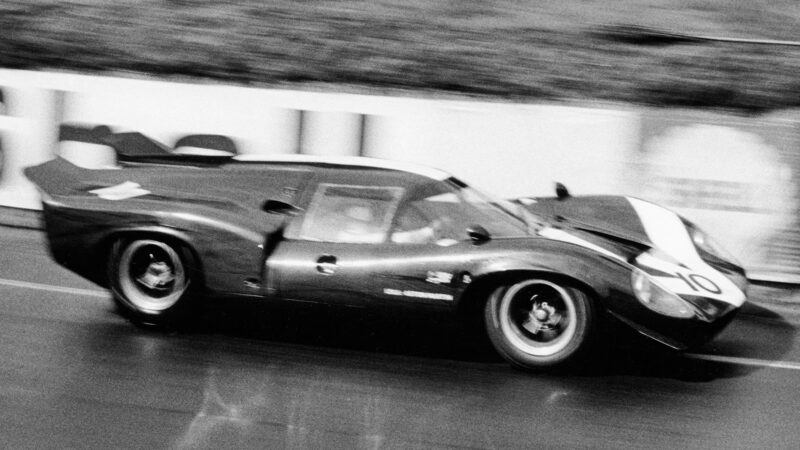
Lola Aston-Martin link-up didn’t go well – Surtees and John Hobbs retired after three laps at Le Mans ’67
Getty Images
The T70 has been described as a superb chassis lacking a competitive engine, but Surtees demurs: “I’m not a great believer in using production-based engines in racing, but from the point of view of a series like Can-Am and letting it link in with the American public perception of racing, I actually think the Chevy engines were great.”
Nonetheless, in an attempt to create an all-British package, Lola got into bed with Aston Martin in 1967. It was not a happy marriage. “The Aston V8 could have achieved so much but was a total disaster. We didn’t expect it to compete on out-and-out speed – we were hoping to a degree that weather would play a hand. If it rained a bit, as happened at the Nürburgring and the Le Mans practice, we were very competitive. Before Le Mans we did a long test at Goodwood, 10 or 12 hours, but in the race we lasted only a few laps because Aston Martin had changed the design of the head gaskets! As soon as we got the cars back from Le Mans, we took the Aston engines out and that was the end of that.”
